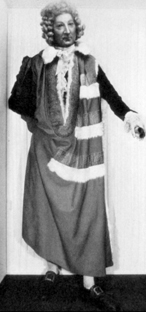|
Wax
model portrait of William Pitt, Earl of Chatham, by
Patience Lovell Wright (1725-1786) and historical plaque honoring her.
Source:
100 Farnsworth Street (private home), Bordentown, NJ
Date: 1779 (for sculpture) and 1754-1779 for sign and plaque
|

Click on image to enlarge. |

Click on image to enlarge. |
Wax model
portrait of William
Pitt, Earl of Chatham, by
Patience Lovell Wright
(1725-1786), 1779.
Courtesy: Olin Collection |
Historical
plaque honoring
Patience Lovell Wright.
Courtesy:
Colman Collection
|
Patience Lovell Wright (1725-1786) was born in Bordentown, into a
well-to-do Quaker farming family. As a child she showed great
promise as
an artist. However, it was not until she was left a widow with five
children
to support that she returned to making sculpture as a source of income.
Initially, she practiced creating pieces using bread dough. When she
felt
she was proficient enough, she moved to the medium for which she became
famous, modeling in wax. Her reputation derived from her skillful
portraits
of public figures. Wright moved to England in 1772 and with introductions
from
Benjamin Franklin, she received commissions for portraits of well-known
living people of her time, among them William Pitt. She made wax models of
them and created the first traveling exhibition of waxworks. Outgoing and
voluble, Wright was embraced by British society and the king and queen,
whom she addressed as “George” and “Charlotte.” With the outbreak
of the Revolutionary War, Wright is believed to have sent secret messages
to the Americans. According to one story, she supposedly concealed messages in the wax sculptures that she sent to her sister who was running
a wax museum in Philadelphia. A contemporary of Wright's commented on the
“vigor and originality of her conversation.”
|